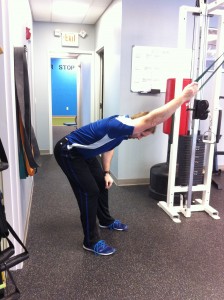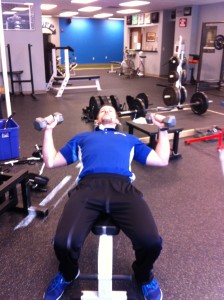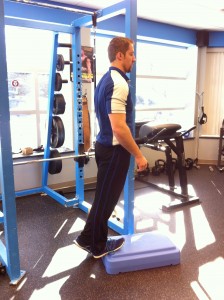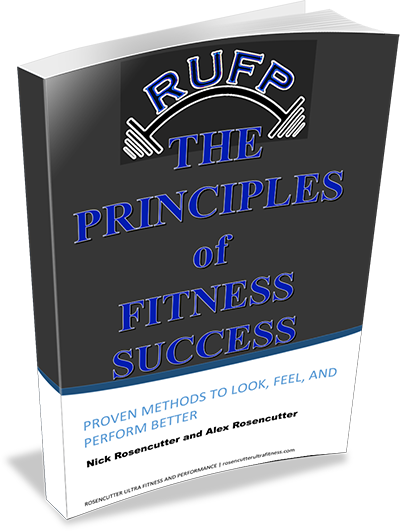Today, we have part two of our stretching series. If you didn’t already do so, please check out part one. Enjoy!
Flexibility can be overrated
Obviously, having a healthy range of motion in different areas of the body is a good thing. But its just that: a healthy range of motion. Having too little OR too much can be problematic. Example: If I have 80 to 90 degrees of straight leg hip flexion, my range of motion is healthy. If I have 20 degrees, I should probably get some length there so I don’t kill myself when I take a step. At the same time, if I have 160 degrees, I’m probably going to have some serious instabilities that are going to cause even worse problems. Excessive flexibility is usually not a good thing (instabilities that lead to pain, injuries, etc.) and instability is often harder to improve than stiffness or shortness. Those in the excessive flexibility category need to develop STABILITY to help their performance and prevent injury, NOT more stretching.
What does static flexibility even mean?
On this same subject, just because I have a decent range of motion in a static posture does not mean that it will carry over to actual active activity. When I hold a static stretch passively, I am causing inhibition of the muscle I am stretching with no real activation of any opposing or synergistic muscle and have no stabilization or control requirements. When I move my body during physical activity, I need certain muscles to kick in and stabilize while certain muscles activate and others inhibit. If I don’t have development of this multi faceted control, all of the static flexibility in the world won’t matter. This is one reason why dynamic stretching is much more effective before activity and static stretching should be saved for post activity (IF needed). It is also a good reason why strength training with proper squatting, hinging, pushing, pulling and rotation movement actually builds healthy mobility throughout the body contrary to the old myth that it makes you “stiff.” As an example, if you are squatting with good technique, you are building mobility through the hips, ankles, knees and thoracic spine WHILE simultaneously developing great core stability, strength, positive neurological firing patterns and total body control. You are developing strength through motion while certain muscles stabilize, certain muscles move and certain muscles learn to relax. Call me crazy but developing adequate mobility with a functional exercise like a squat seems like a much more rational idea than laying on a floor holding a static stretch that might give me some range of motion in that one position but does none of the other oh so important things just mentioned. Simply statically stretching one muscle without doing something to develop control or activity with another corresponding muscle is just not going to help me in most cases, period.
Just like having strength with a lack of mobility is not usually good, having flexibility without stability, strength or control can be even worse. More flexibility is not always better. This can be relative. If you are a dancer, gymnast, figure skater, cheerleader, etc. then you are most definitely going to need more than the normal healthy range of motion for most areas of the body; however, this must also come with plenty of control and stability. If you are a sprinter or speed skater, your hamstrings and hip flexion might be a little “stiffer” than normal because you utilize the stretch reflex and the “springiness” that the stiffness gives you to make you faster. Bottom line is: Have healthy mobility with adequate stability and control; if your sport requires more or less, then address this accordingly.
What stretches are good if I actually need them?
If something truly needs to be stretched (and its not often), then do it and make sure you do it right. Since most of you are going to stretch regardless of what you read, here are some that may actually be helpful for you. For the pecs (all those desk workers out there), I like Dumbbell fly eqi’s. For the calves (all those high heel girls out there), I like a basic hanging calf stretch off of a step. For lats, I like overhead band traction. For adductors (often the right) and left posterior hip (often the left), the Postural Restoration Institute has some nice stretches that are effective when needed. Do these for long durations along with good breathing to get the tissue to respond. Combine them with tissue therapy when needed to make it more effective and make sure you activate the appropriate muscle to help hold the new tissue length: strengthen the mid and low traps to help balance out the pecs, strengthen the anterior tibialis and extensors to balance out the calves and strengthen the low traps and possibly upper traps to balance out the lats. These are very basic and generalized examples and there is usually a lot more that will go into the specifics of what you need as an individual (i.e. left pec and right lat might be short on their respective sides so there will be some rotational and breathing components that will need to be addressed among other things) but at least start thinking along these lines. Bottom line is: Don’t just stretch blindly; have a reason.
Overhead band traction:
Keep back neutral, hinge down through hips and let arm move overhead while keeping some tension in the band (anchored to something above you). Take deep breaths while you hold the position for 60 sec to 2 minutes +. Do not force the arm higher than it can comfortably go.
Db Fly EQI
This is an active yet static stretch. Your pecs are in a lengthened position but are still contracting while in that lengthened position since you are holding the weight of the dumbbells. This causes the pecs to add sarcomeres (part of a muscle fiber) in that lengthened position which is very effective at lengthening these muscles and opening up closed down shoulder postures.
Build up from 20sec to up to 2 minutes and be sure not to go down too far
Calf Stretch- Find a stair or step, stand on the ball of your foot and let your heel hang down until you feel a stretch in your calf. Hold for 60 sec to 2 minutes plus.
All can be held for long durations once you are ready.
Think about it
Well that’s great Nick, but my Shape magazine and my elementary school gym teacher always made us stretch everything and its helped me a lot! How do you know its helped you a lot? Have you been tested or assessed? How do you know overstretching that left hammy didn’t contribute to your knee injury you suffered at age 13? How do you know you wouldn’t be stronger and move better if you did things differently? Just because someone once said stretching was the cool thing to do, everybody did it. Its kind of like the backwards food pyramid that recommends boatloads of breads and cereals every day and has probably contributed to many of the health problems that we have today. Don’t rely on conventional wisdom to take care of your body. Look at the facts, learn from those who are actually studying and working with this stuff and think for yourself. You just might improve your performance more than you think possible.
In an extra Part 3, we will show you some of the most common stretches that are performed, butchered and harmful. Stay tuned!



